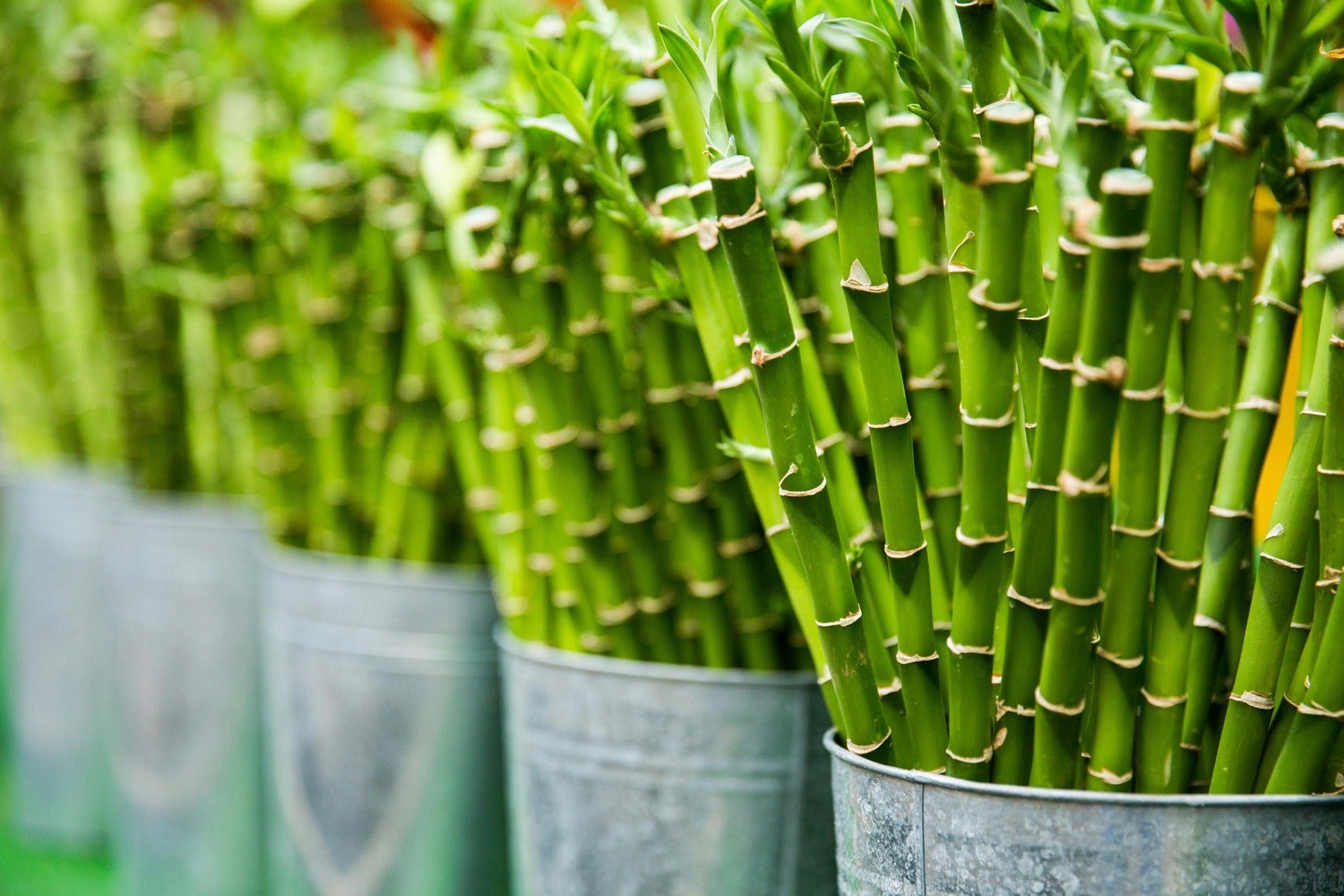Pandas might not be known for their ability to procreate. Their food of choice, meanwhile, does so at an unbelievable rate. Bamboo is so plentiful that it’s been touted as a sustainable solution for making anything from plates and straws and clothes to literal buildings. It’s been cultivated for thousands of years, but these days, it’s surging. The global market was worth $59 billion in 2022, and it’s expected to grow to $88 billion by 2030.
Despite how companies market bamboo, experts warn that the zeal for the material is not really about finding a more sustainable replacement for plastic or wood or synthetic fibers. “It’s a classic attempt to find a new market and grow a new market,” says Kate Fletcher, a professor and author whose work focuses on sustainability in fashion and design. The challenge “isn’t material choices. It’s just entirely about scale, about growth, and reducing it.”
Do any uses for bamboo stand up to scrutiny, or is it just another greenwashy buzzword? The answer depends on what material the panda’s favorite plant is replacing—and how. Let’s break it down.
Potentially greenwashy: As a replacement for paper and wood
In a head-to-head comparison with plain old wood, bamboo’s stats crush. Bamboo is super renewable; it can reach maturity in three years and requires little water, while trees can take decades. It can also grow pretty much anywhere, boasting close to 1,700 species native to five out of seven continents. Bamboo also has a high capacity for carbon sequestration. A 2023 study, for example, found that one species in China could sequester double the amount of local firs and four times the amount of pines.
All that means products in which bamboo is close to its original form—like furniture and cutting boards—can truly be sound alternatives. Same goes for using it for timber or other building materials like flooring, says Jonas Hauptman, co-lead of Virginia Tech’s Bio-Design Research Group. All that comes with an important caveat, though: Some bamboo farmers, for example, cut down existing forests to cultivate the crop, negating any earth-friendly benefits. The designation “FSC certified bamboo” will tell you when the material in a given product was farmed responsibly.
Paper products made from panda food also overlook a source that’s better than any virgin stock. That’s recycled material. Of all the stuff entering the recycling stream, we’re really good at giving paper a second life. Around 68% of it finds a second life, and tissue is a common use case. The Natural Resources Defense Council weighs the source of the paper pulp heavily in its rankings of tissue products, with grades dropping immediately from B to D as soon as fresh material enters the equation. As for that loo bamboo? It might not exactly be wood-free.
Definitely greenwashy: As a replacement for textiles
“Bamboo fabric” is an umbrella term that could mean a lot of different things. The booming use of bamboo in fashion is such a thorny issue that the Federal Trade Commission established guidelines for how companies label such textiles—and famously fined Walmart and Kohl’s $5.5 million for misrepresenting the eco-ness of their wares.
Fabrics made from panda food fall into one of two categories. First there’s “mechanically processed bamboo” or “bamboo linen,” which is made by crushing bamboo fibers, applying natural enzymes, and spinning the resulting material into yarn. Then there are chemically processed textiles, which rely on a solvent to break bamboo into cellulose, which is then further processed before ultimately becoming yarn. Common fabrics like viscose bamboo and lyocell bamboo are made this way and represent the bulk of bamboo textiles. “When a fiber is described as bamboo, in the vast majority of cases, that’s just a reference to the cellulose that goes into this fiber production process,” says Fletcher.
Despite FTC requirements that the words “viscose” (which is essentially rayon) and “lyocell” appear in front of “bamboo” on labels, companies know that the word “bamboo” subliminally suggests that a product is eco-friendly. Don’t assume that means a product is green. Carbon disulfide, which is used in the production of viscose, pollutes waterways, and both types of chemically produced bamboo fabric require tons of water. As for less-gnarly bamboo linen: the Council of Fashion Designers of America says it represents only a small fraction of the bamboo fabric for sale.
Also definitely greenwashy: As a replacement for single-use plastics
So you’re having a picnic, and in an effort to not pile on more plastic pollution to the world’s vast sea of detritus, you opt for a pack of bamboo forks. First thing’s first here: A single-use product is a single-use product, whether it’s made of bamboo or not. The package may proclaim the utensils as “compostable” or “recyclable,” but they won’t break down in your own backyard heap alongside your banana peels; they need to go to an industrial facility.
That’s because to become a perfectly shaped spork or cake plate, bamboo has to be processed into fiber or pulp, which then gets glued together—sometimes even with wood. (Spoiler alert: This is also true for bamboo toilet paper.) Many products also use bamboo that’s combined with plastic. Ever heard of BPC cups? Yep, that stands for “bamboo plastic composite,” and that can pollute waterways the same way materials we perceive to be worse do.
Updated 1/13/25: This story has been updated to include details about bamboo’s use in paper products.

